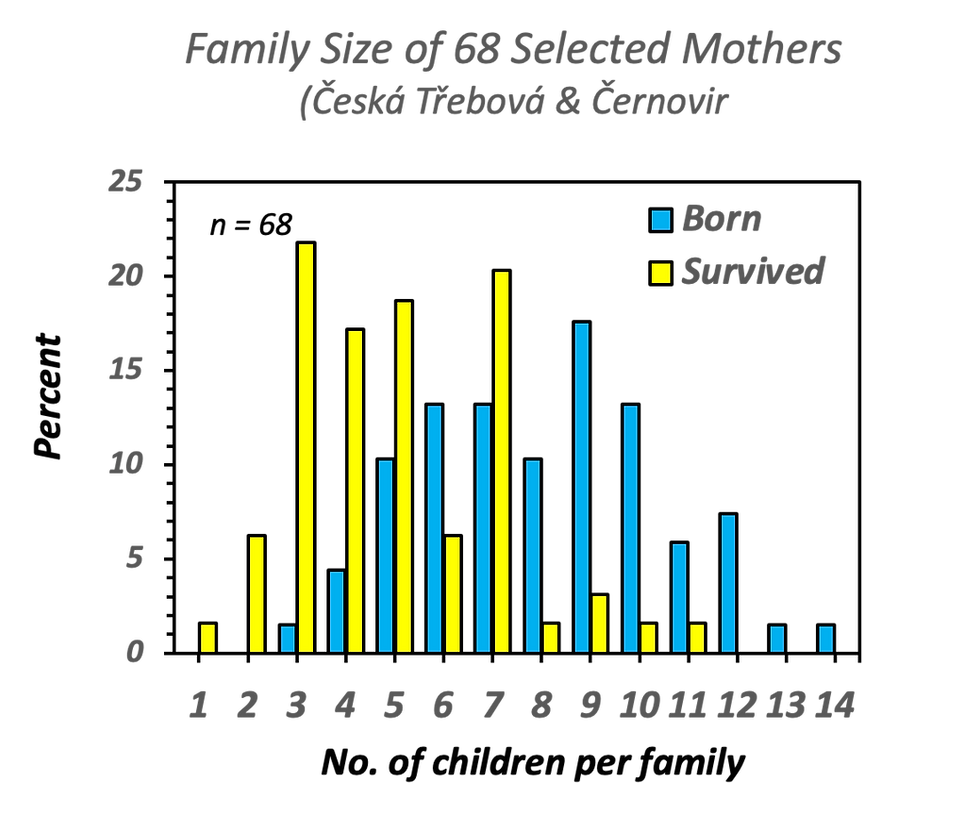Anna Honl (1759-1823): Black Widow?
- msquier95
- Jul 26, 2022
- 3 min read
Anna Honl had the serial habit of marrying older men; she outlived four husbands. Was she a gold-digging black widow, who married for financial gain…or something else? A closer look at her personal history through the parish vital records might provide a better appreciation of who she really was.
Anna Crescentia Honl was the first surviving child of Jan and Rosalia Honl, who came to Česká Třebová from the upriver town of Trebovice. Jan, her father, found work as a podruh, i.e., a farm servant; a decade later he had attained the status of a shoemaker. There were two more babies born in Anna’s family before her mother died and another six after her father remarried. With so many children to raise on the small income of either a podruh or a shoemaker, Anna grew up poor. As a podruh, her father was paid only a small wage; he also received room and board with the farmer’s family and a yearly allotment of second-hand clothing and shoes. Anna would have known hard work from a young age; the entire family worked for the farmer and his wife. Although shoemakers were a step above podruhs on the social ladder, they were generally the poorest among craftsmen. Perhaps Anna grew up wanting a more comfortable life than what she had known as a child.
Anna was 21, when she married the 78-year-old weaver, Josef Zayicek, recently widowed with grown children of his own. Zayicek was only one year younger than Anna’s grandfather, but he offered a more financially secure life for Anna as he was the owner of a house with a garden. After 15 months of marriage, Anna gave birth to a daughter, Anna Marie who lived 23 days. Two years later, Josef Zayicek died. Anna’s first marriage had lasted less than four years.
With little claim to any inheritance, Anna remarried seven months later. This time she married the 64-year-old twice-widowed weaver, Jan Duspiva. During the seven years of her second marriage, Anna bore three sons; none survived their childhood. But Anton, her youngest, was still alive when Anna was widowed for the second time. It appears that the Duspiva family kept Anton, when Anna married Jakub Sheybal, a 60-year-old widower and podruh. As the wife of a podruh, Anna had now returned to a life of hard work on the farm, where she was at the beck and call of the farmer’s wife rather than a mistress of her own home. This third marriage of Anna’s lasted almost 12 years; there were no children. Anna was 45 years old when Jakob Sheybal died.
Now, three-times widowed, it seemed that Anna had not accrued much profit from her marriage strategy except for the security of a roof over her head during her married life. And, afterwards, each widowhood had been brief as if Anna was not welcome to linger in any of her last homes. Perhaps her fourth marriage would be the charm.
Wenzl Waniaus was 51 when his wife of many years died. Wenzl was a Spitaler, i.e., a resident of the town’s poorhouse, where those who were unable to support themselves by disability and poverty, were allowed to live, if there was space and they were judged sufficiently pious. Wenzl occupied one of these valued spaces. His relative youth compared with the other Spitalers suggested a serious disability unrelated to old age. Whatever his disability, Wenzl was eager to remarry and Anna Honl-Zayicek-Duspiva-Sheybal was available. Wenzl and Anna married just three weeks after Wenzl became a widower. Anna’s search for housing security and some comfort seemed to have been finally successful. Besides caring for Wenzl, her only other duty was to offer daily prayers along with Wenzl for the founder of the poorhouse. And, when Wenzl died 16 years later, Anna, now 69, was guaranteed, as the widow of a Spitaler, a roof over her head for the remainder of her life. She died a year later.


Comments